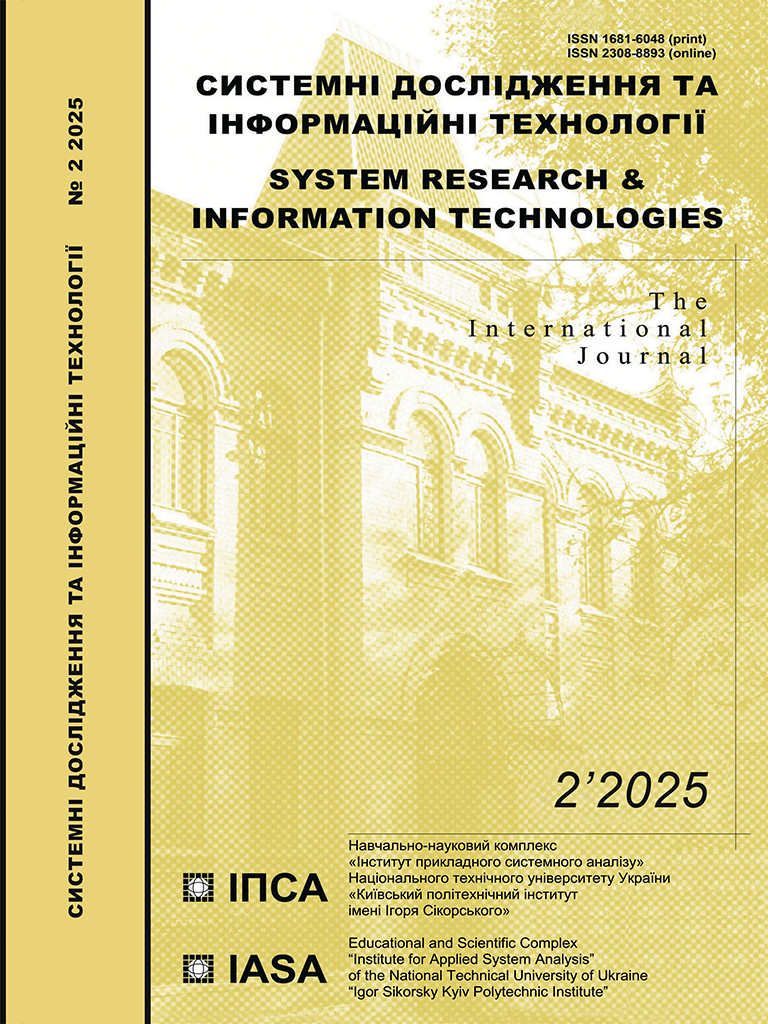Time series forecasting using the normalization model
DOI:
https://doi.org/10.20535/SRIT.2308-8893.2025.2.07Keywords:
optimal forecast, stochastic model, parameter estimation, fractional Brownian motionAbstract
Empirical constructions of time series models based on the reduction of initial data to normally distributed values have been proposed. The goal of a normalization method is to construct an optimal forecast that is linear for the updated data, and the forecasted original data is recovered through the inverse transformation. The different variants of such transformations have been considered, including the reduction of initial data to Gaussian fractional Brownian motion and a one-dimensional transformation using a strictly monotonic function. The computational experiment based on real data, which allows for a stationary model, confirms the higher quality of the forecast by the normalization method compared to traditional models.
References
P.I. Bidyuk, O.S. Menyaylenko, O.V. Polovtsev, Forecasting methods. Luhansk: Alma Mater, 2008, 604 p
Y. Mishura, “Stochastic Calculus for Fractional Brownian Motion and Related Processes,” Lecture Notes in Mathematics 1929, Springer 2008, 393 p. doi: 10.1007/978-3-540-75873-0
K. Kubilius, Y. Mishura, K. Ralchenko, Parameter Estimation in Fractional Diffusion Models, vol. 8, 2018, 390 p. doi: https://doi.org/10.1007/978-3-319-71030
V.G. Bondarenko, “On some statistics of fractional Brownian motion,” System Research & Information Technologies, no. 1, pp. 131–138, 2021. doi: https://doi.org/10.20535/SRIT.2308-8893.2021.1.11
I. Nourdin, Selected Aspects of fractional Brownian motion. Milano: Springer, 2012, 124 p. doi: https://doi.org/10.1007/978-88-470-2823-4

